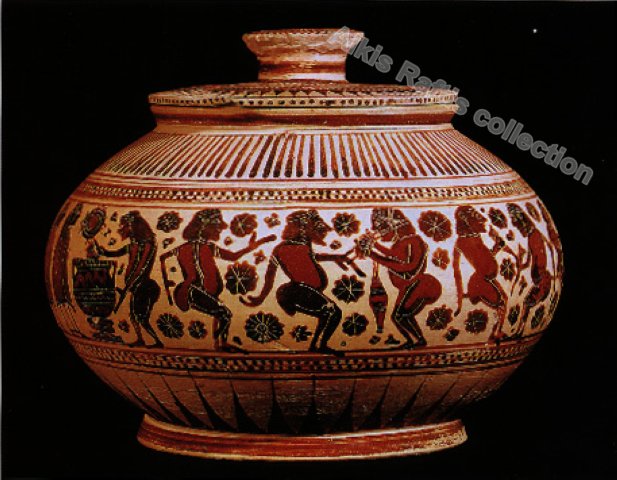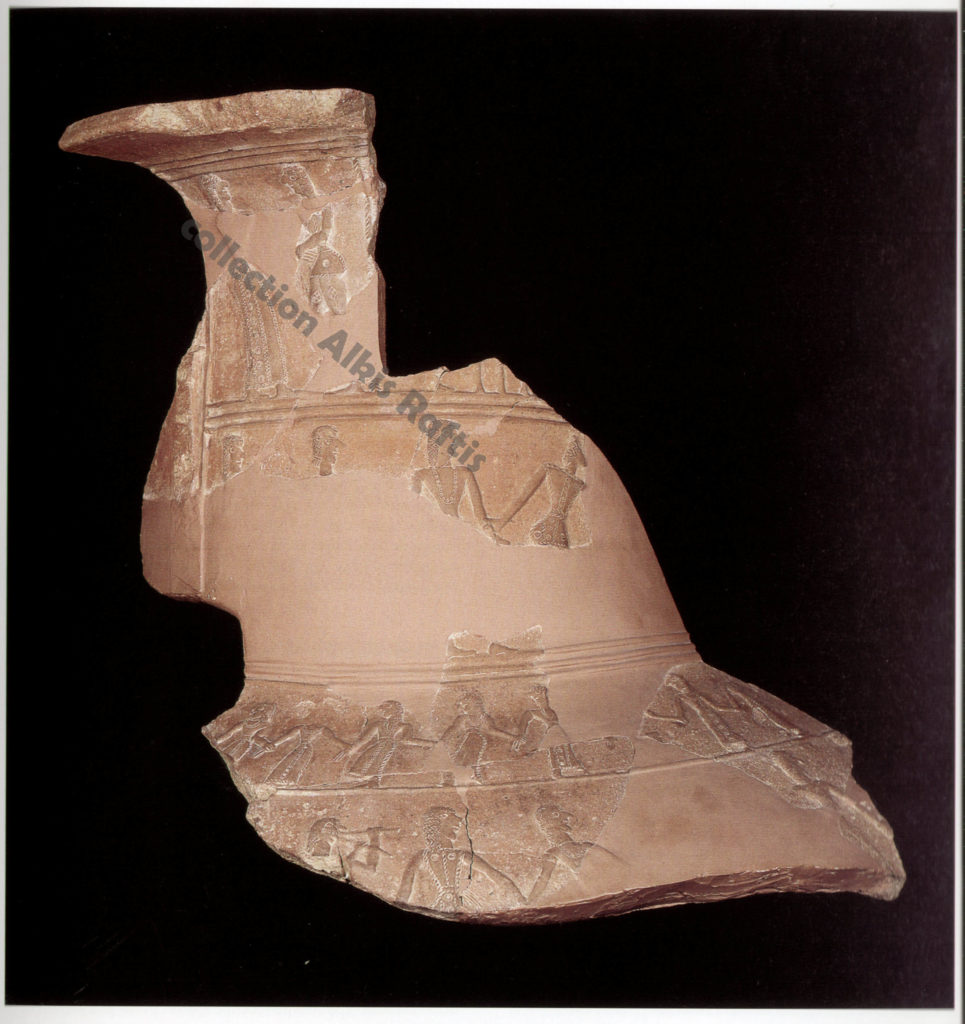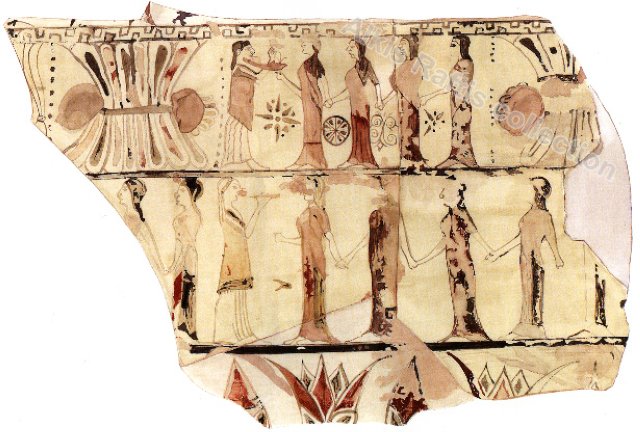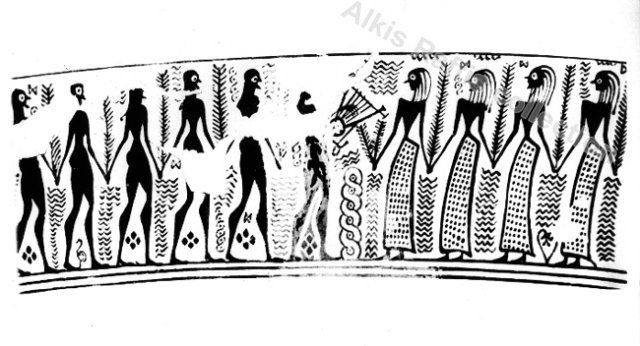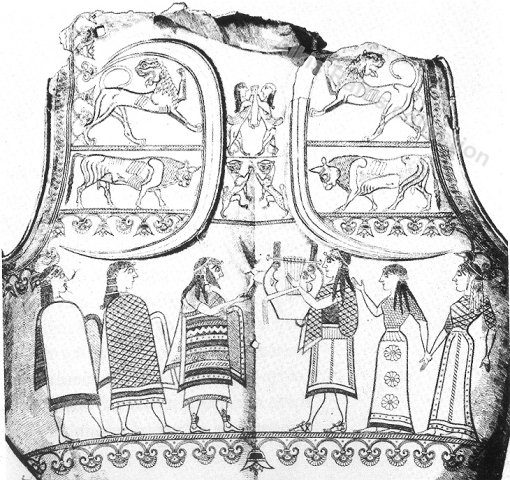Painting / -700 to -600
Terracotta aryballos (oil flask). Early Corinthian, ca. 620–590 B.C.
Painting, black-figure vase, terracotta
605 B.C. approx.
11.1 cm height
During the Early Corinthian period, there seem to have been workshops specializing in aryballoi decorated with komasts. These dancers performed in observances dedicated to the god Dionysos. However, on vases that were produced in quantity, such as this one, it is likely that the iconography is conventional rather than significant in any specific sense.
Ancient Greece

